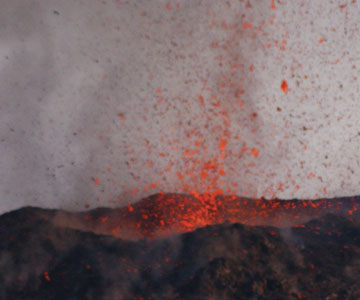Magazine
January-February 2024

January-February 2024
Volume: 112 Number: 1
Mere decades ago, the idea that we could recover genomes from mammoth species was unimaginable. In 2021, three mammoth teeth found in the permafrost of Siberia, ranging in age from 700,000 to 1.2 million years old, yielded genome-wide data that added to the ancient elephantids’ evolutionary tree. Two of the teeth belonged to animals that were ancestral to the woolly mammoth (Mammuthus primigenius); the third belonged to a previously unknown species. Comparing its DNA to other mammoth genomes revealed that the Columbian mammoth (Mammuthus columbi), a well-known prehistoric denizen of the La Brea Tar Pits in California, descended from interbreeding between woolly mammoths and the newly discovered species. In “Ancient DNA,” Daniel T. Ksepka discusses how genetic material from all sorts of organisms that lived long ago can settle long-running debates and mysteries in paleontology. (Cover illustration by Beth Zaiken.)
In This Issue
- Art
- Biology
- Chemistry
- Communications
- Computer
- Economics
- Engineering
- Environment
- Ethics
- Evolution
- Policy
- Sociology
- Technology
How People Decide to Trust in Science
Larry Au, Christian Capotecu, Gil Eyal, Sophie Sharp
Communications Policy Sociology
Surveys purporting to document increasing mistrust in research are oversimplifying complex phenomena.
Sustainability Simplified
Stephen Porder
Environment
In an era of overwhelming climate and environmental anxiety, focusing efforts on the elemental building blocks of life can help shape a better future.









